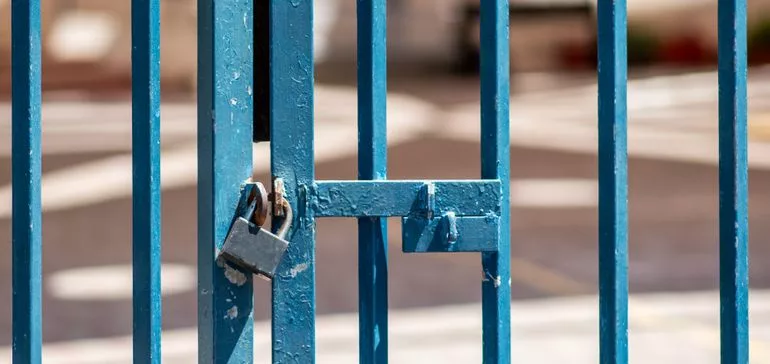[ad_1]
Ricardo Azziz has held numerous executive positions in higher education and led the merger that resulted in Georgia Regents University, now Augusta University. He is principal at Strategic Partnerships in Higher Education Consulting Group.
He writes the regular Merger Watch opinion series on corporate restructuring in higher education.

More than half of the nearly 1,300 institutional closures of the past 50 years have occurred in the past decade — with roughly 15% of all degree-granting institutions of higher education in the U.S. closing in the last 10 years. And college and university closures do not benefit anybody.
By now we have all heard of the recent analysis by the National Student Clearinghouse Research Center, or NSCRC, in collaboration with the State Higher Education Executive Officers Association, or SHEEO, which reported that after a college closes, many of the displaced students never earn a degree. That closures detrimentally impact students should not come as a surprise.
Institutions at risk for closure tend to cater to at-risk students. The NSCRC/SHEEO data noted that, compared to colleges that remained open, institutions that closed enrolled larger proportions of students of color (55% compared to 46.4%) and students receiving Pell Grants (54.7% compared to 45.8%). Additionally, of those students that went on to reenroll at another school, more than 50% dropped out during the follow-up period, much higher than the one-third of all undergraduates that usually drop out. Institutional closures disproportionately affect a more vulnerable, underserved, and underprepared population of students.
We should also recognize that many more than current students suffer from institutional closures. Former students, particularly recent grads, will suffer as they now hold a certificate or diploma from a school that is defunct, lessening its perceived value. With time, they may also struggle to obtain required proof of attendance, credit transcripts, and the like.
Many of these institutions are also important economic engines for their communities, providing employment to area residents and purchasing local goods. Faculty and staff will struggle to find another position, and long-time alumni lose the opportunity to retain their tradition and heritage. Nobody wins and almost everybody loses when a college closes.
Why are we seeing a spike in college closures? For one, we are seeing inordinate levels of institutional challenges, including changing demographics, economic crises, increasing competition, changing state and family priorities, and increasing operational costs, layered on top of significant excess capacity nationally. However, college and university closures most often reflect a failure of leadership — although not necessarily the failure of those immediate leaders that had to manage the closure.
While not all institutions can (or should be) saved, most institutional closures reflect the failure of past governing boards to face the fiscal reality of their institution — and to plan accordingly and in a timely manner. Leaders should always consider and, if necessary, pursue potential partnerships, mergers, or consolidations before a school has exhausted its financial and political capital. The inability or unwillingness of many leaders to take such action is reflected in the fact that the number of institutional closures in higher education far outweighs the number of successful mergers.
In fact, the risk of closure can be predicted. In a prior analysis several coauthors and I reported on a number of risk factors predictive of closure, noting that most schools at risk for closure are small and financially fragile, with declining enrollment and limited resources to mount significant online programs. While there are many clear signs that a school is at risk for closure, the major challenge to mounting a response seems to be the unwillingness of institutional leaders to understand, face and act on these signs.
In agreement, the NSCRC/SHEEO analysis noted that two-thirds of the students whose colleges closed went through a sudden and rushed institutional closure — an abrupt closure that negatively impacted the students’ chances of reenrollment. In fact, almost 90% of the students in the study who did not earn a credential and did not reenroll had experienced an abrupt closure.
Interestingly, the NSCRC/SHEEO data also reported that the proportion of schools closing in an orderly manner tended to be the smaller ones (average enrollment of 134 students), while schools that closed abruptly tended to be larger (average enrollment of 682 students). Why should this be? One explanation is that at smaller schools, the fiscal pressures were so clear that closure seemed inevitable — and the only responsible thing to do was to plan on an orderly closure. Alternatively, at schools that were somewhat larger, it was easier for leaders to embrace “hope” as the preferred strategic plan — not understanding that “hope is not a plan.”
Passionately (or stubbornly) embracing institutional independence as the preferred outcome and “hope” as the preferred strategy may sound right and righteous. But governing boards must remember that by ignoring signs of impending crisis and refusing to pursue other strategic options — including mergers and consolidations — in a deliberate, proactive, and timely manner, they are not only failing in their fiduciary role. They are also failing their students, their staff and faculty, and the local community.
[ad_2]
Source link
Meet Our Successful Graduates: Learn how our courses have propelled graduates into rewarding
careers. Explore their success stories here!
Discover More About Your Future: Interested in advancing your teaching career? Explore our
IPGCE, MA, and QTS courses today!

Explore Our Courses: Ready to take the next
step in your education journey? View our
comprehensive course offerings now!

